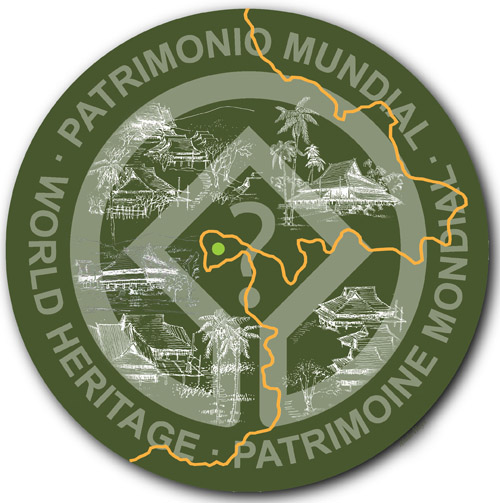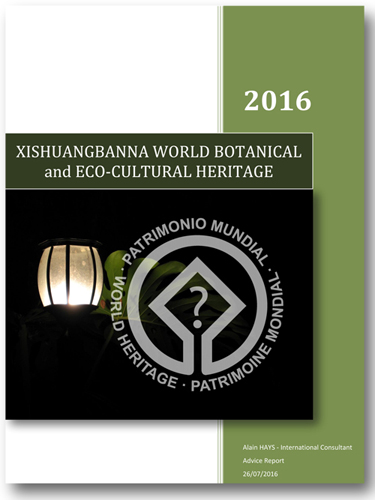Mr. Alain Hays, chief designer of our XTBG scientific research center and residential complex, has submitted to the XTBG authorities a special advice report entitled “Xishuangbanna World Botanical and Eco-Cultural Heritage”. This report argues for the classification of the Garden and its indigenous multicultural and natural environment as a UNESCO World Heritage. Among many arguments put forward in his report, Mr. Hays highlights that:
“Xishuangbanna region, its Dai and Aka Hani settlements, and the Xishuangbanna Tropical Botanical Garden embedded in this indigenous cultural and natural context, form a unique cultural and natural heritage that deserves to be known at global level, for the strong ecological message it brings to humanity. This true-shared “eco-cultural heritage” is vulnerable as the urban growth expands towards rural areas and tropical woodlands, its recognition as a living World Heritage could play an important role for biodiversity conservation which is linked to the local culture preservation and sustainable nature-friendly development.”
“Thinking in World Heritage, XTBG is very significant making a bridge between the native tropical rainforest environment (which is representative of tropical South-East Asia) and worldwide plants diversity and richness expressed on site by numerous and unique plants collections from many parts of the World: a botanical treasure available to the national and international public, not only for the pleasure of everyone but also for science and education, a real enjoyment which contributes to biodiversity raising awareness and learning .
XTBG is not only a garden for visitors, but also a wonderful “on site” link between indigenous knowledges of plants (ethnobotany), working for their continuity and development, and botanical science. In a way XTBG is at core of a World Natural and Cultural Heritage, creating, contributing and preserving at the same time its own “eco-cultural heritage” for local people and humanity benefit.”
(Note: Mr. Alain Hays, expert in built heritage and traditional architecture, has discovered in 1985 and studied the “Fujian Tulou” which was recognized by UNESCO as a World Cultural Heritage in 2008, and has participated, in November 2010, in “The first World Conference on Terraced Landscapes” organized in Mengzi and Honghe Hani and Yi autonomous prefecture. The " Cultural Landscape of Honghe Hani Rice Terraces " was declared a World Heritage Cultural Landscape by UNESCO in 2013)

XTBG Eco-Cultural World Heritage Illustration

Xishuangbanna World Botanical and Eco-Cultural Heritage


